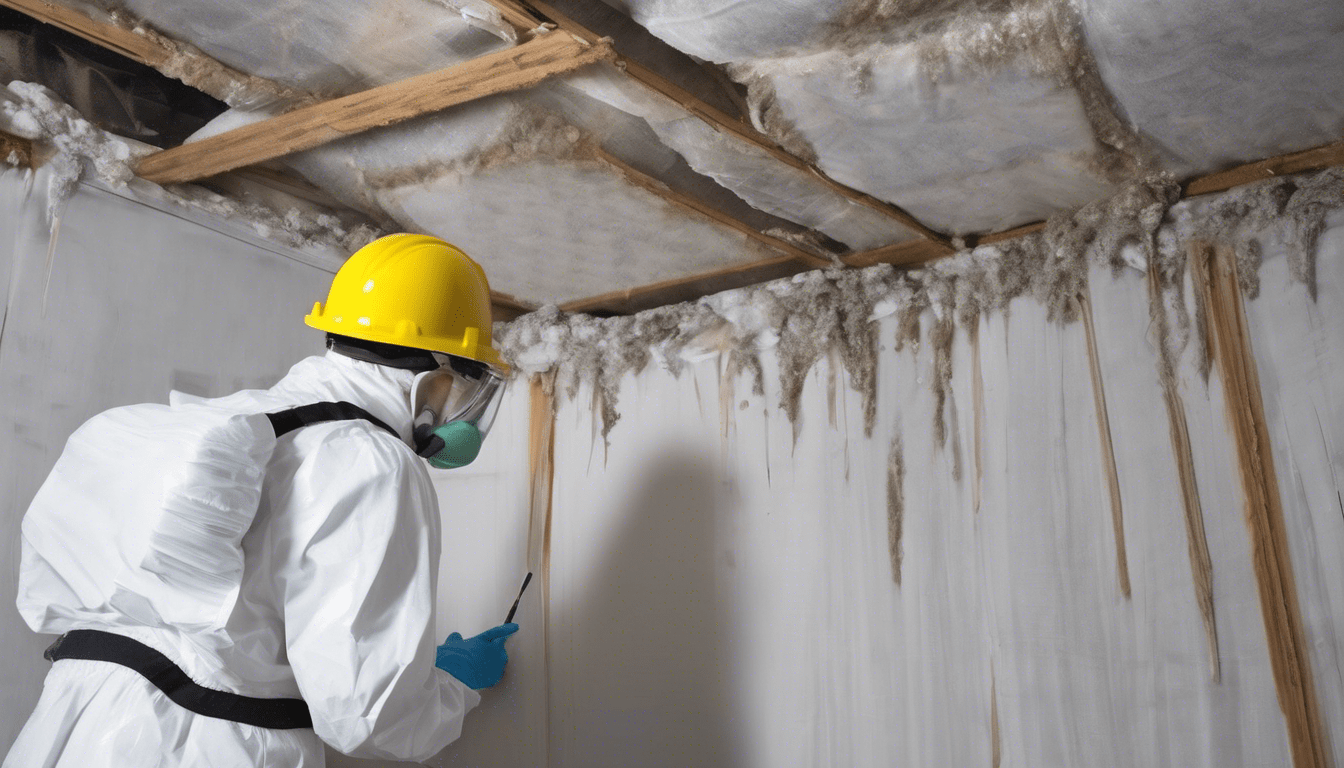Performing asbestos surveys in the UK requires meticulous coordination and adherence to strict regulations. Understanding the legal framework helps dutyholders avoid costly penalties, while selecting the appropriate survey type ensures safety and compliance. This checklist provides a comprehensive guide, emphasizing preparatory steps, safety protocols, and post-survey procedures. Equipped with this approach, professionals can navigate challenges effectively, ensuring thorough assessments and legal adherence—ultimately protecting both occupants and the environment.
Legal Framework and Regulations for Asbestos Surveys in the UK
Understanding the Control of Asbestos Regulations 2012 is essential for anyone involved in asbestos surveys. These regulations form the cornerstone of UK asbestos law, setting clear standards for how asbestos-containing materials should be managed and surveyed. Under this legislation, dutyholders—typically property owners or employers—bear the responsibility to identify asbestos risks and act accordingly to protect occupants and workers.
In parallel : Revolutionize your supply chain with a strategic sourcing solution
Dutyholders must ensure that thorough asbestos surveys are conducted by competent professionals, aiming to locate and assess asbestos presence before any work that might disturb these materials. Failure to comply with these regulations can lead to serious repercussions, including hefty fines and potential criminal charges. The penalties are designed to enforce strict adherence, reflecting the severe health risks asbestos poses.
The legal framework also emphasizes the importance of maintaining up-to-date records of asbestos surveys and management plans. This transparency helps prevent accidental exposure and facilitates safer decision-making for renovations or demolitions.
In parallel : Affordable self storage solutions tailored for glasgow residents
For a detailed and compliant survey, engaging with Professional Asbestos Survey Services in South East London guarantees adherence to the complex legal requirements. Their expertise helps dutyholders meet their obligations efficiently, reducing the risk of non-compliance under the UK asbestos law framework.
Types of Asbestos Surveys and When to Use Each
Understanding the types of asbestos surveys is crucial for ensuring safety and compliance with regulations. The two main categories are Management Surveys and Refurbishment and Demolition Surveys. Each serves a distinct purpose and is suitable for different situations.
A Management Survey is designed as a routine inspection where the primary goal is to identify asbestos-containing materials (ACMs) in their current condition within a property that is still occupied or in use. This survey type is essential for ongoing properties to monitor the presence of asbestos and manage any associated risks. It involves a thorough visual inspection of accessible areas, sampling suspected materials without causing significant disturbance. Management surveys are suitable for commercial or residential buildings where regular monitoring is required to ensure occupant safety.
On the other hand, a Refurbishment and Demolition Survey is a much more detailed inspection carried out before any renovation, refurbishment, or demolition work begins. This survey requires a comprehensive inspection that can involve invasive investigation methods, such as lifting floorboards or opening up structural elements, to detect hidden asbestos that could be disturbed during construction work. This survey is mandatory to ensure worker safety and proper asbestos removal before any building alteration or demolition.
The primary difference between these survey types lies in their objectives and the level of detail required. Management surveys are less intrusive and focus on managing asbestos in place, whereas refurbishment and demolition surveys are more invasive with the aim of identifying all asbestos so it can be safely removed or managed prior to disturbance.
Choosing the correct survey type depends on the property’s current and intended use, whether routine maintenance is the priority or if significant physical changes to the building are planned. For example, a building undergoing redevelopment must have a refurbishment and demolition survey, while a school conducting annual safety checks would typically require a management survey.
For those needing further detailed advice or professional support, consider contacting Professional Asbestos Survey Services in South East London, who specialize in both survey types and tailor their services to property owners’ specific needs.
Preparatory Steps Before Conducting an Asbestos Survey
Before starting an asbestos survey, meticulous planning is essential to ensure accuracy, safety, and compliance with UK regulations. The first step involves gathering comprehensive property information and historical records. This includes reviewing architectural plans, renovation histories, and previous inspection reports, if available. Understanding the building’s age and past uses helps identify areas where asbestos-containing materials (ACMs) are most likely to be present.
Next is conducting a detailed risk assessment to define the survey’s scope. Determining whether a management survey or a refurbishment/demolition survey is required depends on the project’s objectives and the building’s condition. The risk assessment evaluates potential hazards and prioritizes areas for inspection, ensuring survey efforts focus on the most critical locations.
Equally important is assembling a qualified survey team. Surveyors must meet UK standards, holding relevant certifications and training to handle asbestos safely. A competent team follows strict protocols to minimize health risks while collecting accurate data. Employing experienced professionals guarantees adherence to legal requirements and enhances the reliability of the asbestos survey outcomes.
Taking these preparatory steps not only safeguards occupants but also streamlines subsequent phases, making the survey process more efficient. For detailed assistance, professional expertise from companies offering Professional Asbestos Survey Services in South East London can be invaluable, combining thorough preparation with expert execution.
Conducting the Asbestos Survey
Effective asbestos surveys rely heavily on meticulous planning and execution. First, ensuring site access and safety measures is paramount. Surveyors must follow strict protocols, such as wearing protective gear and establishing controlled zones to prevent asbestos exposure. This careful attention safeguards both the personnel conducting the survey and building occupants.
Sampling procedures form the survey’s backbone. Accurate sampling procedures and documentation require collecting materials suspected of containing asbestos without disturbing them unnecessarily, thus minimizing fiber release. Each sample is carefully recorded with detailed notes on location, condition, and material type to support precise laboratory analysis.
Specialized equipment greatly enhances survey effectiveness. Tools such as fiber-optic scopes and air monitoring devices assist in non-invasive inspection and real-time air quality assessment. Importantly, personnel training in these technologies and asbestos handling standards ensure all survey activities meet legal requirements and achieve reliable results.
For those seeking reassurance on compliance and safety, engaging with Professional Asbestos Survey Services in South East London guarantees surveys conducted by qualified experts, proficient in both equipment usage and safe sampling protocols.
Post-Survey Procedures and Reporting
After completing an asbestos survey, the next step is interpreting the survey findings to determine the presence and level of asbestos hazards. This involves careful analysis of the collected samples and site conditions to assess risk accurately. The interpretation must distinguish between materials that contain asbestos and those that do not, and also classify the severity of potential exposure.
Preparing a legally compliant, detailed report is crucial. Such a report must clearly document all findings, including locations and types of asbestos-containing materials identified during the survey. The report should adhere to UK regulations, ensuring it contains all necessary information for compliance, such as survey scope, methodology, and any limitations encountered. By doing so, it serves as an essential document for property owners, occupiers, and contractors.
The final component involves providing recommendations for asbestos management and remediation based on the survey results. These recommendations might include strategies such as encapsulation, removal, or regular monitoring. Advising on appropriate action helps mitigate risks and ensures safety for all building users. Engaging with Professional Asbestos Survey Services in South East London can support the drafting of thorough reports and effective management plans tailored to specific property needs.
Overall, post-survey reporting is a critical process that bridges the gap between hazard identification and safe asbestos control. It empowers stakeholders to make informed decisions about managing asbestos risks responsibly and legally.
Health and Safety Protocols During Asbestos Surveys
Understanding and adhering to health and safety protocols during asbestos surveys is crucial to protect surveyors and occupants alike. Personal Protective Equipment (PPE) forms the first line of defense. Surveyors must wear properly fitted respirators or masks designed to filter asbestos fibers, along with disposable coveralls, gloves, and eye protection to minimize exposure risks. This PPE prevents inhalation and skin contact with hazardous asbestos materials.
Containment procedures are essential to restrict asbestos fiber release. Survey areas are sealed off using barriers and warning signs to prevent unauthorized access. Surfaces and tools are frequently wetted to reduce fiber dispersal during sampling. After the survey, all asbestos-contaminated materials—including PPE and sample waste—must be carefully packaged in sealed, labeled bags before disposal at designated facilities. This strict disposal procedure complies with environmental safety regulations, ensuring no fibers are inadvertently released into the environment.
Emergency response procedures are established to manage accidental asbestos disturbances or exposure. Survey teams should have immediate access to decontamination showers and first aid kits. If contamination occurs, protocols require orderly evacuation, air quality monitoring, and medical evaluation for affected personnel. These safety measures underscore the priority of minimizing health risks during asbestos surveys.
For those seeking professional guidance, engaging experts who follow these rigorous protocols is advisable. Certified professionals adhering to recognized standards assure the highest safety during their inspections. Learn more about trusted providers offering Professional Asbestos Survey Services in South East London.
Best Practices for Ensuring Compliance and Accuracy
Adhering to established survey standards is essential for ensuring both compliance and accuracy during asbestos surveys. The Health and Safety Executive (HSE) guidance alongside PAS 128 standards form the backbone of effective asbestos survey procedures. These standards specify the methods for identification, sampling, and analysis, ensuring that all surveys meet legal and safety requirements in the UK. Compliance with these frameworks helps minimize health risks and legal liabilities throughout the survey process.
Comprehensive documentation and record-keeping are vital for maintaining survey integrity and providing clear evidence of compliance. All findings, sample locations, analytical results, and any unexpected issues should be recorded meticulously. Proper record-keeping also facilitates future inspections or refurbishment planning, offering a reliable reference point for building managers and contractors.
Furthermore, investing in regular training and ongoing professional development ensures surveyors remain up to date with the latest legislation, technologies, and industry best practices. This continuous education fosters higher accuracy in identifying asbestos-containing materials and adheres to evolving safety protocols. Maintaining certifications and attending professional workshops boosts confidence in survey accuracy and helps surveyors adapt to changing regulatory environments.
For specialized support, consulting Professional Asbestos Survey Services in South East London can guarantee adherence to these best practices, backed by expert knowledge and experience.
Resources and Templates for Asbestos Surveys in the UK
When preparing for an asbestos survey, having access to reliable resources and templates is essential. These tools help ensure thoroughness and compliance with UK regulations. Among the most valuable resources are downloadable checklists and survey templates designed specifically for asbestos assessments. These documents guide surveyors through each step of the inspection, from initial site walkthroughs to final reporting, making the process more efficient and standardized.
In addition to templates, maintaining an updated list of certified asbestos survey contractors and consultants is crucial. Hiring professionals with proper certification guarantees that the asbestos survey meets the legal standards set by health and safety authorities. This list allows property owners and managers to identify qualified experts quickly and confidently.
Official UK government and health and safety websites provide further support and reference materials. These sources cover legislative requirements and practical guidance, helping surveyors and clients stay informed on the latest asbestos management protocols. For those seeking detailed, accurate support, consulting Professional Asbestos Survey Services in South East London offers access to expert knowledge and practical application tailored to the region’s regulations.
By utilizing these resources, property owners and managers can navigate asbestos surveys with greater clarity and confidence, ensuring health risks are properly managed while adhering to UK statutory requirements.
Common Challenges and How to Overcome Them
When engaging in an asbestos survey, several challenges can arise that complicate the process. One major challenge is dealing with inaccessible areas. These might include confined spaces, ceilings, or wall cavities where straightforward inspection isn’t possible. To overcome this, surveyors often use specialized equipment like retractable cameras or endoscopes, enabling safe and thorough examination without unnecessary disturbance to the structure.
Another difficulty lies in identifying asbestos in complex building materials. Asbestos may be embedded in composites or hidden within layers of paint and insulation, making visual detection unreliable. In such cases, taking carefully controlled samples for laboratory analysis ensures precise identification. This step must be performed by experienced professionals to avoid contamination or damage.
Ensuring the timely completion of the survey within legal deadlines is crucial for compliance and project progression. Delays can occur due to unforeseen complications or the need for extensive sampling. Effective project management and clear communication between survey teams and stakeholders help maintain schedules, ensuring thorough survey execution without missing critical legal timelines.
Addressing these challenges methodically enhances the overall reliability and safety of asbestos surveys. For comprehensive expert support, consider consulting Professional Asbestos Survey Services in South East London.






